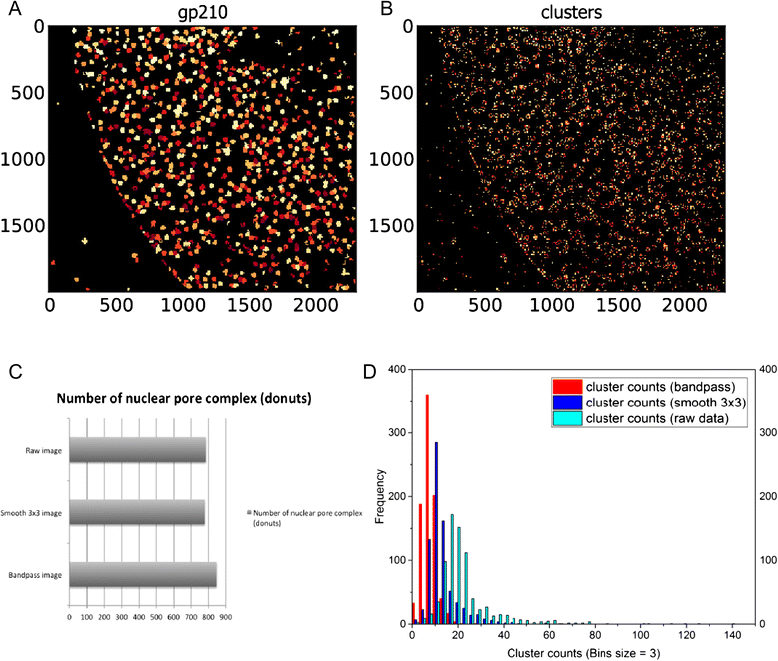

Multi-well plates are commonly used to perform high-throughput screening utilizing organisms such as Caenorhabditis elegans (Wahlby et al., Reference Wahlby, Kamentsky, Liu, Riklin-Raviv, Conery, O’Rourke, Sokolnicki, Visvikis, Ljosa, Irazoqui, Golland, Ruvkun, Ausubel and Carpenter2012 O’Reilly et al., Reference O’Reilly, Luke, Perlmutter, Silverman and Pak2014), larval zebrafish (Rihel et al., Reference Rihel, Prober, Arvanites, Lam, Zimmerman, Jang, Haggarty, Kokel, Rubin, Peterson and Schier2010), or cell culture (Balcarcel & Clark, Reference Balcarcel and Clark2003). The component tree method was a later development which could be applied to segment time-lapse microscopy images and track moving cells (Xiao et al., Reference Xiao, Li, Du and Mosig2011). ( Reference Held, Palmisano, Haberle, Hensel and Wittenberg2011) provided a parameter optimization method to improve the image segmentation performance. For evenly illuminated images, Otsu’s ( Reference Otsu1979) method is the commonly used approach to first determine a gray intensity threshold and subsequently segment the image. Image segmentation is the prerequisite for phenotype quantification and is central to almost all applications related to bio-image informatics (Peng, Reference Peng2008). Among these options, image segmentation is a vital processing technique well suited for biological image analysis. A wide variety of processing techniques are now available to researchers in order to achieve these desired results. Bio-image processing techniques are widely used to automatically detect and quantify biological phenotypes (Shamir et al., Reference Shamir, Wolkow and Goldberg2009 Neumann et al., Reference Neumann, Walter, Heriche, Bulkescher, Erfle, Conrad, Rogers, Poser, Held, Liebel, Cetin, Sieckmann, Pau, Kabbe, Wunsche, Satagopam, Schmitz, Chapuis, Gerlich, Schneider, Eils, Huber, Peters, Hyman, Durbin, Pepperkok and Ellenberg2010 Rihel et al., Reference Rihel, Prober, Arvanites, Lam, Zimmerman, Jang, Haggarty, Kokel, Rubin, Peterson and Schier2010 Swierczek et al., Reference Swierczek, Giles, Rankin and Kerr2011 Wang et al., Reference Wang, Gui, Liu, Zhang and Mosig2013 Yemini et al., Reference Yemini, Jucikas, Grundy, Brown and Schafer2013 Zhou et al., Reference Zhou, Cattley, Cario, Bai and Burton2014 Chen & Han, Reference Chen and Han2015 Kirsanova et al., Reference Kirsanova, Brazma, Rustici and Sarkans2015 Chen et al., Reference Chen, Xia, Huang, Chen and Han2016). It can be used to process the microscopy images captured from multi-well plates and detect experimental subjects from an unevenly illuminated background.īio-image informatics is becoming an increasingly important component of various biological studies (de Chaumont et al., Reference de Chaumont, Coura, Serreau, Cressant, Chabout, Granon and Olivo-Marin2012 Myers, Reference Myers2012 Xian et al., Reference Xian, Shen, Chen, Sun, Qiao, Jiang, Yu, Men, Han, Pang, Kaeberlein, Huang and Han2013 Chen et al., Reference Chen, Qian, Wu, Xian, Chen, Cao, Green, Zhao, Tang and Han2015 Weissleder & Nahrendorf, Reference Weissleder and Nahrendorf2015). By applying this methodology across a wide range of multi-well plate microscopy images, we show that our approach can consistently analyze images with uneven illuminations with unparalleled accuracy and successfully solve various problems associated with uneven illumination. In addition, the method also can solve a variety of problems caused by different uneven illumination scenarios. The presented method is effective enough to distinguish foreground and therefore a model organism ( Caenorhabditis elegans) from an unevenly illuminated microscope image. Here, we propose a new method based on contrast values which removes the need for illumination correction. Currently, no publicly available method adequately solves these various problems in bright-field multi-well plate images. The unambiguous segmenting of multi-well plate microscopy images with various uneven illuminations is a challenging problem. However, it is difficult to detect the differences between foreground and background when the image is unevenly illuminated. Image segmentation is a key process in analyzing biological images.


 0 kommentar(er)
0 kommentar(er)
